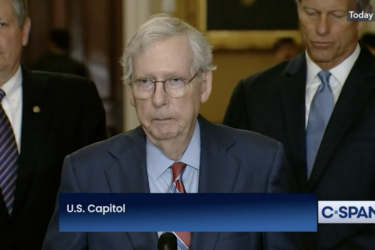
The Older Americans Act – signed into law on July 14, 1965 – mandated a national conference on aging every 10 years. I’ve attended the past two White House Conferences on Aging (1995, 2005), and this decade’s event is far different from the previous ones.
This conference was preceded by five, one-day, invitation-only “forums;” prior conferences featured hundreds of federally sanctioned local events. At the one-day forums, mornings were spent listening to national and local experts, then attendees separated into special interest groups for the afternoon to discuss – and then report back on – one of four designated topics. Here is how one attendee assessed the forum in Boston.
Like the forums, and unlike past conferences, this year’s WHCOA is an invitation-only, one-day event on July 13. Given the expertise and interest groups that will attend that event, there likely will be many side meetings pre- or post-conference. Journalists can contact issue-specific organizations, such as the Alzheimer’s Association, Family Caregiver Alliance, Compassion and Choices, the National Association of State Directors of Veterans Affairs, the Spry Foundation, or the Elder Justice Coalition for more information.
And, unlike past conferences, when the entire spectrum of aging issues was up for discussion, this decade’s conference will focus on four topics:
- Retirement Security (see: Baby Boomers Control 70% Of The U.S. Disposable Income)
- Healthy Aging
- Long Term Services and Supports
- Elder Justice
About those press passes
For journalists hoping to cover this year’s conference, press passes will be issued closer to the day of the conference. If you would like to get your name on the request list – which does not guarantee receiving a pass – send your name and contact information to the conference’s deputy communications director, Rachel Maisler (Rachel.maisler@whaging.gov).
However, if you can’t snag a press pass, don’t worry. You’ll still be able to find out what’s on the agenda at the conference and get your information, insights, and data from those who will be at there, either as presenters or delegates (see following information). Additionally, the entire conference will be live streamed and many local organizations plan to hold “watch parties.” Here’s a quick look at what to expect that day.
More to know
In anticipation of the once-a-decade conference, the Gerontological Society of America published two special issues on the conference’s topics. The articles are dense and written by recognized experts; they are goldmines of insight, interview sources and story ideas about the aging of America and how the nation is likely to respond to the challenges and opportunities that come with an aging society.
Of special note in the Society’s “2015 White House Conference on Aging” issue are articles outlining:
- the important role Social Security plays in keeping the majority of Americans out of poverty as they age (Polivka and Luo)
- the burden cognitive impairment and dementia are placing on caregivers and society (Hurd, et al., Langa, et al., Gitlin, et al., Roth, et al.)
- the need to revise the definition and role of “palliative care” (Morrissey, et al.)
- the role age-friendly communities and community-based services must to play if older Americans are to age as healthily as possible and remain independent (Greenfield, et al., Garrett, et al, Lynn and Montgomery, Rose, et al., Kane)
- the inadequate initiatives now in place to support “productive aging” (Gonzales, et al., Pitt-Catsouphes, et al.)
- the need to expand the Elder Justice Act to address all aspects of elder mistreatment, not just elder financial abuse and exploitation (Munoz, Pillemer, et al.)
The Society’s report, “The 2015 White House Conference on Aging: Agenda Setting and Issue Framing” assesses and explores the challenges that face aging Americans, the Aging Network, state departments/offices on aging, and nonprofit and for-profit organizations and agencies that are responsible for the health and well-being of seniors. It may be a more intense read than the other publication, because it presupposes familiarity with policy issues and policy-speak.
Of special note are the articles and proposed solutions on:
- access challenges – to preventive services, transportation, nutrition programs, family supports, livable housing and neighborhoods that older adults (and those caring for them) face (Carsten, et. al, Greenfield, et al.)
- the need to “recast” the Social Security debate to reflect the realities the social insurance program faces in the 21st Century (Kingston and Checksfield)
- the looming caregiver crisis (Thomas and Applebaum)
- the physical and mental, not just financial, consequences of elder abuse (Kaplan and Pillemer)
- the need for federal policy that promotes partnering and cross-cutting solutions and stops looking to the past for solutions to current and future challenges (Whitman). This is an especially worthwhile read.
Contact the GSA’s communications director Todd Kluss at 202-587-2839 or tklus@geron.org to obtain both special issues.
The spring issue of the American Academy of Arts & Sciences’ journal, Daedalus, uses sociologists’ and demographers’ lenses to look at some of the same societal, community and familial issues:
- How the U.S. is dealing with these issues while becoming an older and more economically divided nation (Olshansky);
- How to address aging and racial diversity (R. A Hummer and M. D Hayward);
- The struggles to figure out how to reform Social Security so that it remains a viable retirement option for all in the future (Olshansky, et al.);
- struggles to find caregivers for those who need them while also providing viable opportunities for productive and meaningful engagement – work, volunteering, lifelong learning opportunities — for the nation’s longer lived residents (Zissimopoulos, et al.)
It may look like these articles are a rehash of those in GSA’s two special issues, but given the different frameworks used to cover these topics, they are still worth reading.
For a good backgrounder on what journalists should be looking for to come out of this conference – as well as a history of past conferences – read Paul Kleyman’s most recent issue of the Generations Beat newsletter. You can subscribe by sending him a note (pkleyman@newamericamedia.org).
And finally, while most recent issue of the American Society on Aging’s Gerontologist isn’t specifically focused on the White House Conference on Aging, it is focused on Medicare, the biggest piece of health care legislation for older adults to ever come out of D.C.









